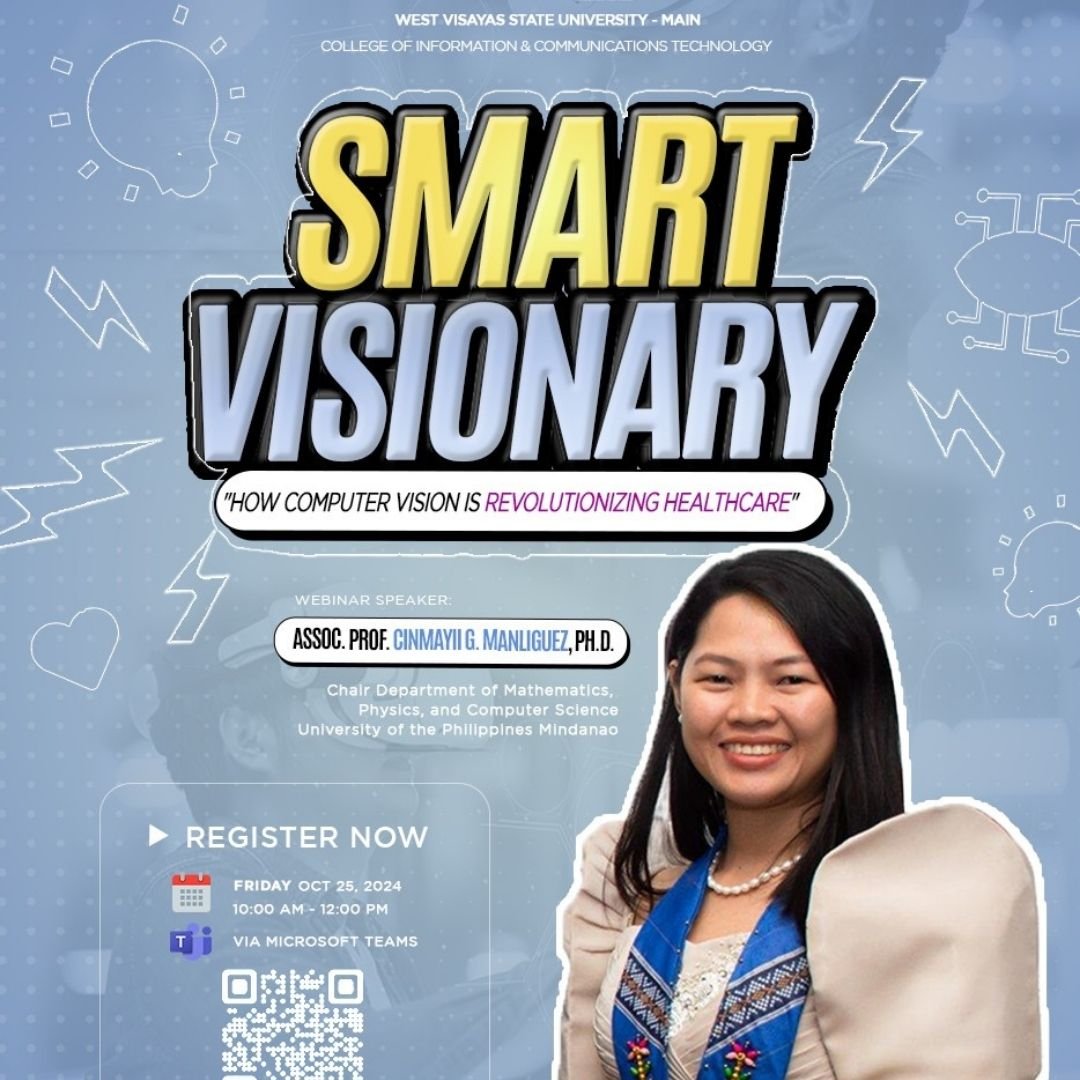I recently attended a thought-provoking webinar titled “Smart Visionary: How Computer Vision is Revolutionizing Healthcare” alongside fellow computer science students at West Visayas State University – Main Campus on October 25, 2024. I was excited to learn from Assoc. Prof. Cinmayii G. Manliguez, Ph.D., who leads the Department of Mathematics, Physics, and Computer Science at the University of the Philippines Mindanao. From 10:00 AM to 12:30 PM, I explored the transformative impact of computer vision and image processing on modern healthcare systems.
The session began with an engaging Slido.com activity, where I joined other participants in sharing our immediate associations with “computer vision” and “image processing.” I found this interactive opener set the tone for what would become a highly participatory learning experience. Dr. Manliguez then guided me through a comprehensive journey covering fundamental concepts, historical developments, current medical applications, and critical ethical considerations surrounding these technologies.
One of the most valuable takeaways for me was understanding the crucial distinction between computer vision and image processing. I learned that while image processing focuses on enhancing images for better clarity or highlighting specific features, computer vision enables computers to interpret visual information similar to human understanding. This distinction helped me realize how these complementary technologies collaborate to advance healthcare—from enhancing X-ray clarity to identifying tumors within those images.
I found the historical trajectory of computer vision particularly fascinating. Beginning with basic image manipulations decades ago, I discovered the field has evolved into sophisticated systems capable of detecting subtle anomalies in medical scans that might elude even experienced clinicians. Today, I can see how these technologies assist with disease diagnosis, surgical guidance, patient monitoring, and personalized treatment planning, significantly improving healthcare accuracy and efficiency.
Throughout the presentation, I appreciated how Dr. Manliguez expertly balanced technological enthusiasm with ethical mindfulness. As I considered AI systems becoming increasingly integrated into diagnosis and monitoring, I recognized how issues of patient privacy, data security, and algorithmic fairness demand careful consideration. Her inclusion of Albert Einstein’s quote that “imagination is more important than knowledge” struck me as a poignant reminder that creative thinking drives innovation in any field, including healthcare technology.
I found the webinar’s organization exemplary, featuring logically structured sections that built progressively from basic concepts to complex applications. The visual presentations incorporated helpful images and diagrams without overwhelming text, making the information accessible to me and all participants. I especially enjoyed the regular integration of Slido activities after each major topic, which kept me engaged throughout the 2.5-hour session and encouraged my active processing of new information rather than passive listening.
In my view, Dr. Manliguez demonstrated exceptional skill in translating complex technical concepts into accessible explanations through relatable examples and clear language. Her evident passion for the subject enhanced my learning experience, while her thoughtfully chosen inspirational quotes reminded me of the human elements and broader purpose behind healthcare technologies.
From what I gathered in the webinar, computer vision is not just changing healthcare procedures but revolutionizing the entire approach to patient care. I left convinced that by combining technological innovation with ethical consideration, these advances promise to make healthcare more accurate, efficient, and accessible for everyone—truly embodying the “Smart Visionary” concept that guided this enlightening session I was fortunate to attend.

